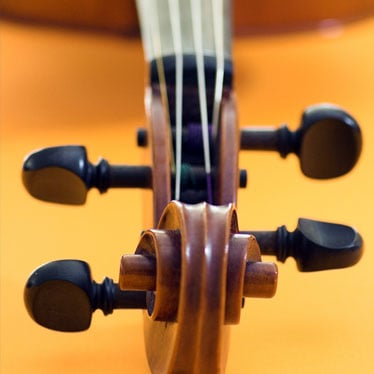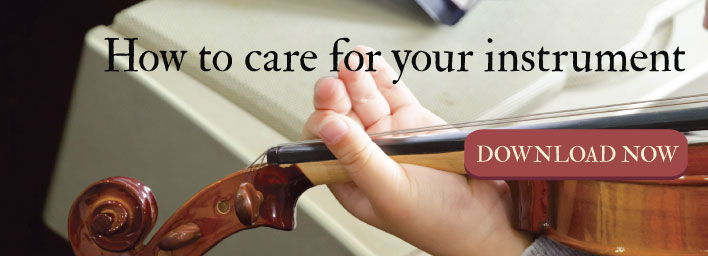How to Tighten Your Loose Violin Strings

For many violinists, string issues make playing and practicing an exasperating endeavor. However, to advance your skill, you need to be able to keep your violin in top condition, which means being able to adroitly tune your instrument. If while you’re playing your violin you constantly suffer from loose strings, it can lead to discontent, leading you to abandon the pursuit altogether.
Loose violin strings can be caused by a number of reasons. You can of course, simply tighten loose strings using your pegs, but if you experience chronic problems (like having to tighten loose strings repeatedly during a single practice session), investing a little time to discover why your violin strings are loose can save you tons of frustration. Moreover, chronic loose strings may point to another problem area that needs to be repaired. In that case, by checking it early, you can help prevent later, more extensive maintenance.
Reasons Violin Strings Loose their Tension
Although many reasons stem from improperly wound strings, there are different factors that will cause your violin strings to lose their grip, and each circumstance will dictate the proper way to tighten them.
Pegs Slip: If your pegs slip, the string will loosen and go out of tune. Sometimes pegs can’t keep your string in place because the peg itself has worn down and won’t grip properly in the hole. This type of problem can be eliminated by removing the peg and very gently using super fine grit sandpaper to rough up the surface. Usually, one gentle swipe will do. Keep in mind that if you over-sand the peg you’ll change its size and rather than the solving the problem, you’ll just make it worse. Peg dope is another alternative, but you really don’t want to rely on it. It is a compound that causes the wood to swell, so if you’re not careful, you’ll end up at the other end of the spectrum and the peg will get stuck.
Pegs will also slip if you fail to gently apply pressure when you’re tuning your violin. The motion involves turning and pushing to secure it. The only way to remove this problem is to practice tuning your violin with the pegs.
Changes in Humidity or Temperature: Because your violin is created from organic materials, significant changes in the humidity levels or temperature will cause the pieces to expand or contract. Many students are surprised by the amount of water that can be absorbed or lost by their violin. If you’ve moved it to a very dry atmosphere, expect to tighten violin strings before playing. Solve this issue by keeping your violin in its case when not playing it. A case humidifier is also a wise, and quite affordable investment.
Bridge Shifts: Constantly having to tighten your violin strings can alter the vertical position of your bridge. When looking at it from the side, the back of the bridge (the side facing the tailpiece) should form a 90 degree angle with the top plate of your instrument. If it is leaning toward the peg box, that improper position will make it easier for your strings to loosen. This problem can be avoided by making sure that you lubricate the notches in your bridge using a graphite pencil.
Improper Winding: Strings will become loose more often if your string isn’t wound properly on the peg. Tighten violin strings G and D by turning counterclockwise and the A and E string with a clockwise motion (the string should exit from the top of the peg towards the nut). Also, you should wind the first loop on the peg towards the pointy end of the peg, then gradually wind each successive loop toward the edge of the peg box (outward). This locks the string in place to keep it from slipping.
Tips to Successfully Tighten Violin Strings
- Make sure that as you turn the peg that the string evenly coils around the peg. If it crisscrosses itself, you’ll end up having to re-tighten it repeatedly.
- Use a peg lubricant (sometimes called “paste” or “compound”) to ensure that the peg turns freely, but still maintains the right amount of friction. A single lipstick size tube costs around $15, but will last for quite a few years.
- Remember, when looking at the pegs on the right side of the box (E and A string), clockwise motion—toward the scroll—tightens them. The left side pegs (D and G string) use a counterclockwise motion—toward the tailpiece—to tighten.
If you realize that the problem stems from improper winding, old pegs that need reshaped or refitted, or peg holes that need to be fixed, take your violin to your local repair shop or trusted luthier. A professional can make the mechanical adjustments you need to ensure that your strings stay in place as they should.

